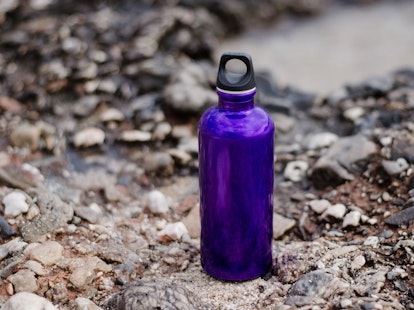China issued an updated version of its national standard for silk quilts GB/T 24252-2019. The revised standard will become effective on May 1, 2020.
The National Technical Committee of Garments of the Standardization Administration of China issued its product standard GB/T 24252-2019 for silk quilts. The new standard will become effective on May 1, 2020. Being included in China’s No. 13 announcement on the newly approved national standards in 2019, the new standard will replace the previous version, GB/T 24252-2009.
Application Scope
This standard applies to silk quilt products that are made with either mulberry silk or tussah silk or both as the main wadding materials and the wadding material set with wadding cover by machine stitching or hand quilting. Silk quilts filled with other kinds of silk fiber as wadding materials may refer to this standard too.
Main Technical Changes
Compared with GB/T 24252-2009, GB/T 24252-2019 contains many revisions.
What are added include:
- The statement of “Silk quilts filled with other kinds of silk fiber as wadding materials may refer to this standard too” in the scope;
- The safety requirement that silk quilts shall comply with GB 18401, and the safety requirements that the infant’s and children’s silk quilts shall comply with GB 31701;
- The requirement that no weight adding process on silk wadding is allowed;
- Appearance requirement of wadding;
- No evaluation required on the evenness or the four corners or sides if the wadding weighs 500g or less;
- No sewing needles, broken sewing needles or any other metal pieces remaining in silk quilts that could potentially cause any hazards;
- The test methods for safety performance, the length and content of silk floss, residual gum content, weight identification of silk floss, cleanness of spun silk floss and the remains of broken sewing needle;
- The terms and definitions of spun silk floss and silk floss nep;
- The requirements for the length of silk floss, residual gum content and fluorescent brighteners to be used.
What are adjusted include:
- The requirement on the sewing needle in the appearance merged into the requirement of the sewing quality in the process quality;
- The title of Annex B changed to be “The test method of compressibility and recovery of wadding”; The test method revised based on the Annex D of GB/T 24252-2009 and the test device scheme added; The Annex B “The test method of mulberry silk content in mulberry silkworm/tussah products” in previous edition deleted, and the test method added to Annex A;
- The title of Annex C changed to be “Qualitative test method of silk floss weight -Chromogenic method after acid digestion”, the Annex C of previous edition deleted and the test method added to Clause 5.2.4 of new standard;
- The title of Annex D changed to be “Qualitative test method of silk floss weight - Acid hydrolysis method at high temperature”, and Annex D in previous edition added to Annex B in new standard;
- The title of Annex E changed to be “Determination of amino acids in silk - Liquid chromatographic method’, and Annex E “Sampling in inspection” in previous edition changed to be Annex F in new standard.
What are revised include:
- Test methods for fibre content, oil content, fluorescent brighteners and dimensional change after washing.
- Terms and definition of silk quilts and silk floss revised, and the terms and definition of “long silk floss”, “medium/long silk floss” and “short silk floss” deleted;
- Requirements for fibre content, oil content, mass deviation rate and compressibility and recovery;
- Inspection items for delivery inspection.
- The labelling rules of product specification and fibre content.
- Annex A revised with the addition of “The expression of test report for the fibre content of wadding”.
Main Technical Contents
The main technical requirements include safety performance, internal quality, appearance quality and process quality.
Safety performance - The safety requirement of silk quilts shall comply with GB 18401, and the safety requirements on infant’s and children’s silk quilts defined in GB 31701 should also be complied with if the product is for infants and children.
Internal quality – Internal quality includes fiber content of wadding covers and wadding, wadding performance (wadding quality, the length of silk floss, oil content, moisture regain, weight deviation rate, residual gum content, trash content, fluorescent brighteners and compressibility and recovery properties), colorfastness of wadding covers (washing with soap or soap and soda, perspiration, water and dry rubbing), and dimensional change rate after washing. Meanwhile, this standard requires that the weight of silk wadding shall not be added by weight increasing process.Details of the Technical Content
For more information, please refer to the China Product Standard GB/T 24252-2019 (Silk Quilts) or contact SGS directly.
SGS Global Softlines has an extensive network of over 40 laboratories worldwide, with a strong team of committed professionals from multi-disciplinary backgrounds. Our internationally accredited state-of-the-art testing laboratories offer a comprehensive range of physical, chemical and functional testing services for components, materials and finished products. We help your company ensure quality, performance and compliance with international, industrial and regulatory standards worldwide. Discover more at www.sgs.com/softlines.
For enquiries, please contact:
Louann Spirito
Consumer and Retail — Softlines
US & Canada Softlines Business Head
Tel: +1 973 461 7919
© SGS Group Management SA - 2020 - All rights reserved - SGS is a registered trademark of SGS Group Management SA. This is a publication of SGS, except for 3rd parties’ contents submitted or licensed for use by SGS. SGS neither endorses nor disapproves said 3rd parties contents. This publication is intended to provide technical information and shall not be considered an exhaustive treatment of any subject treated. It is strictly educational and does not replace any legal requirements or applicable regulations. It is not intended to constitute consulting or professional advice. The information contained herein is provided “as is” and SGS does not warrant that it will be error-free or will meet any particular criteria of performance or quality. Do not quote or refer any information herein without SGS’ prior written consent.



